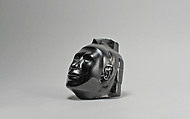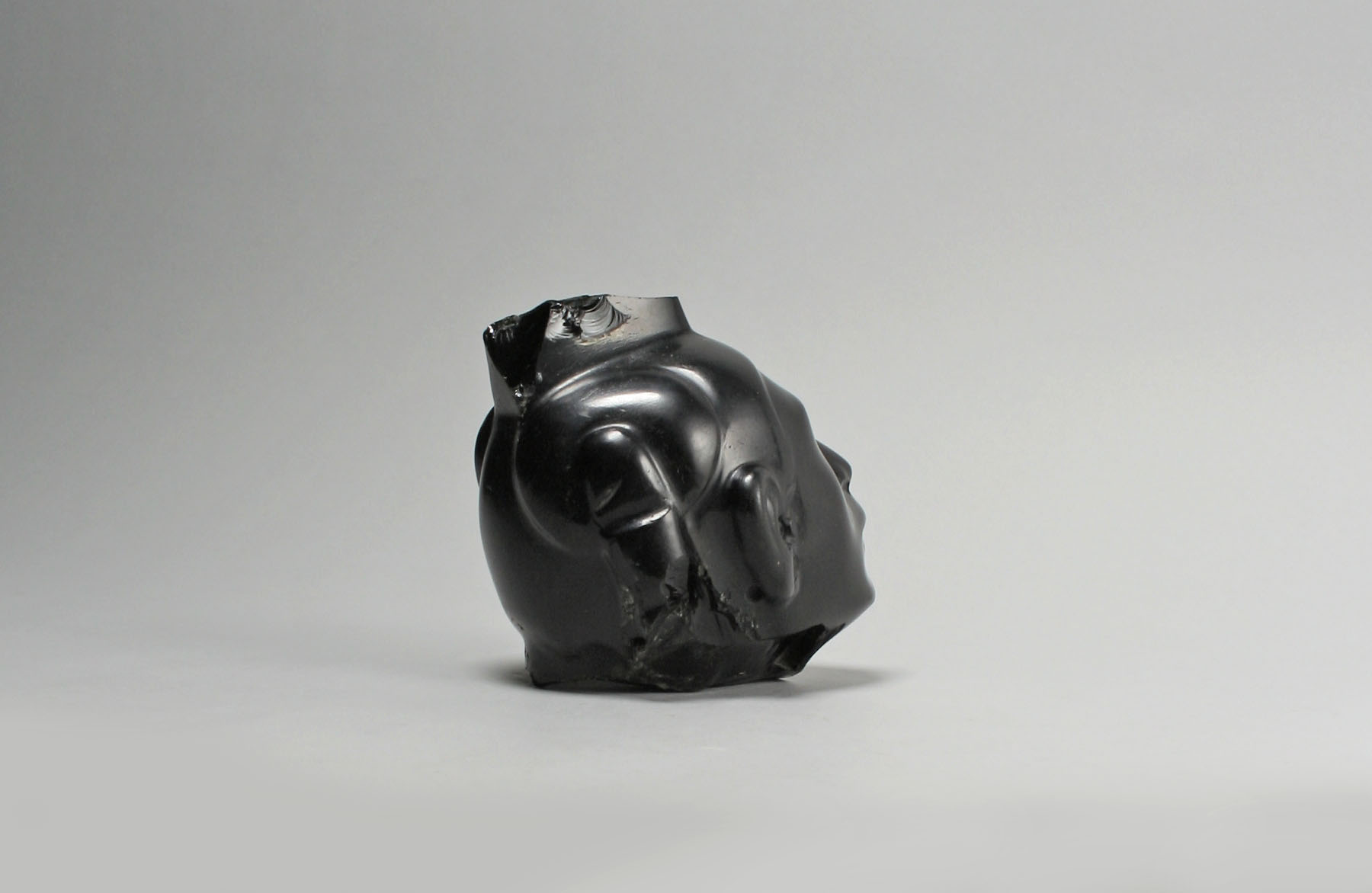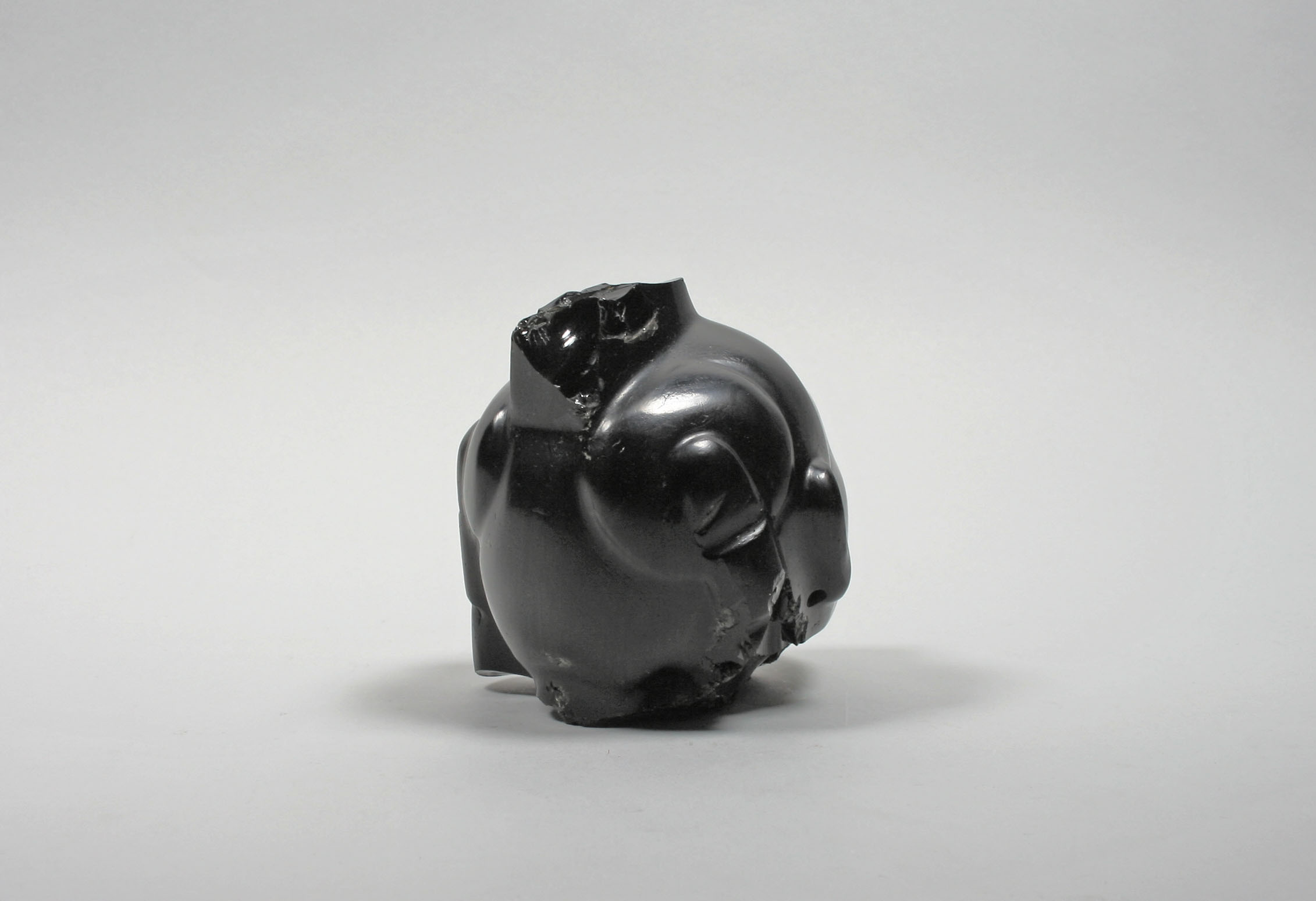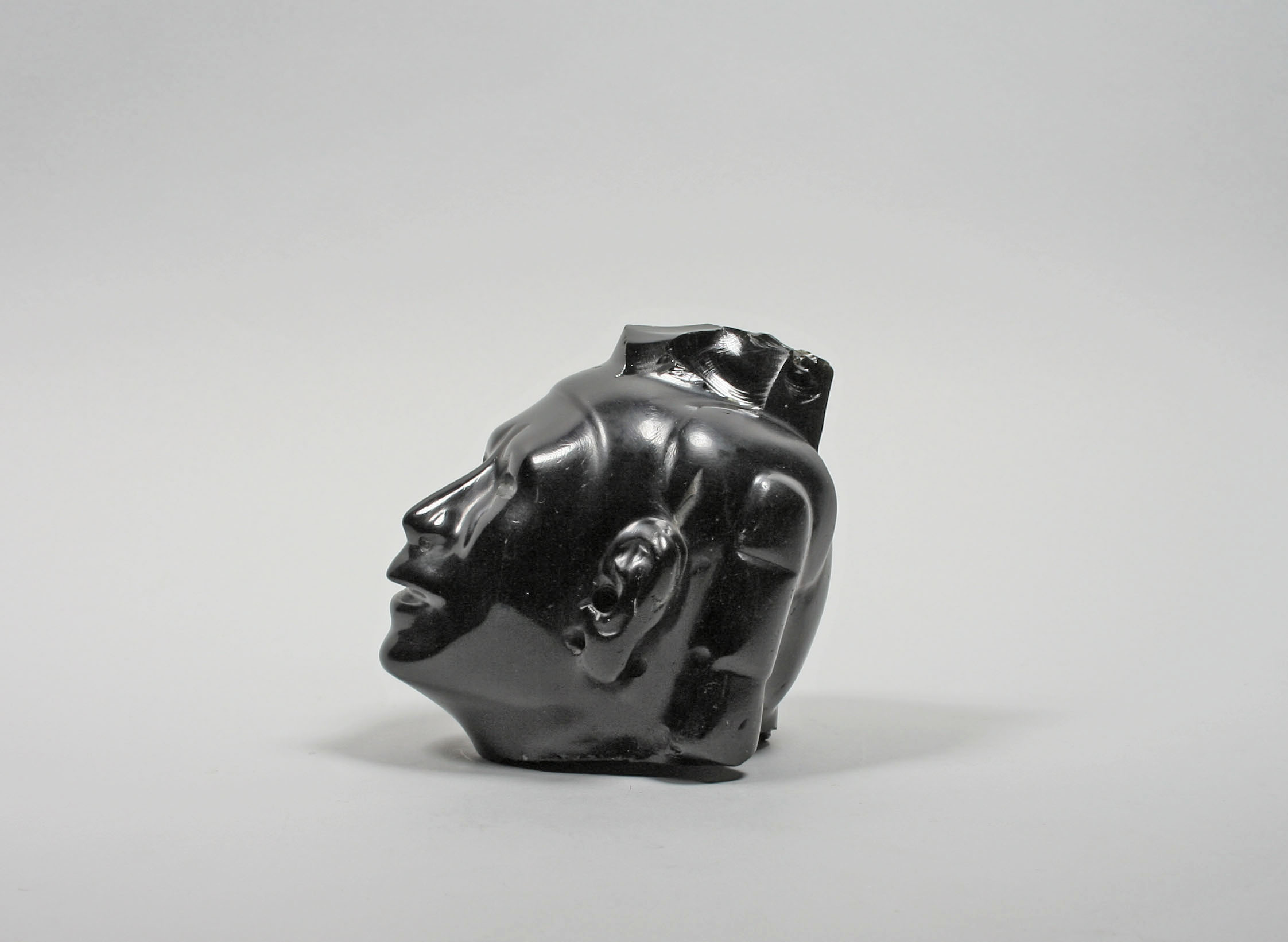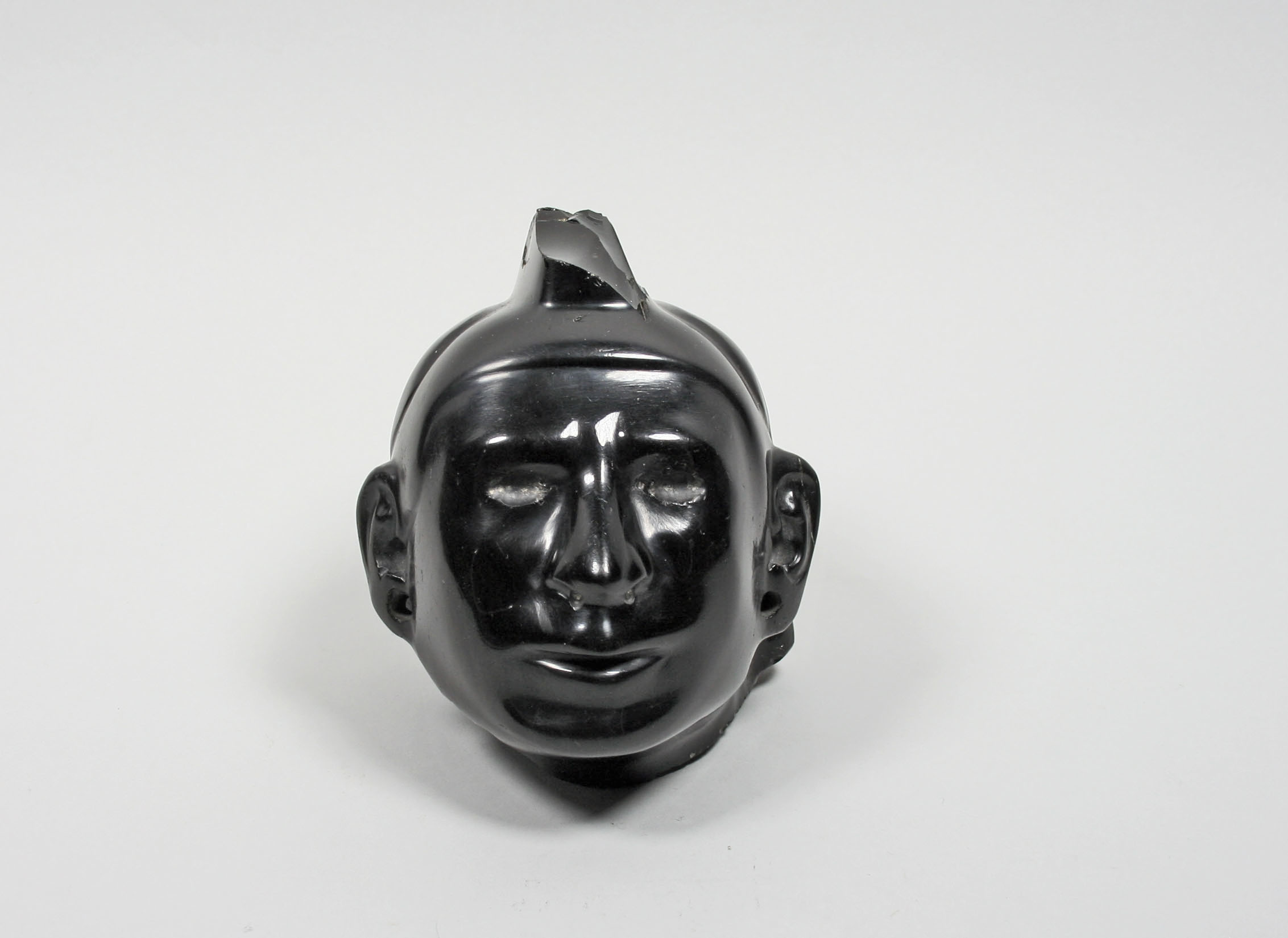Head from a figure, Xochipilli-Macuilxochitl
Not on view
Sculpted from black obsidian, this head of a male figure depicts the Central Mexican god Xochipilli-Macuilxochitl (pronounced sho-chee-PEE-lee mah-kweel-SHO-cheet[l]). His simplified facial features, aquiline nose, and upturned chin exemplify many of the hallmarks of the late Aztec sculptural tradition (ca. 1500). Yet the glossy, mirror-like finish, detailed ornaments, and anatomical precision of the outer ear and brow reveal the talents of a gifted artist. The eye cavities were hand-carved and would have initially held precious stone or metal inlays, while the hollows of the nose and ears were worked with a bow drill and supported removable jewelry. Uniformly beveled, the close-fitting cap features a pair of rosettes with pendant tassels placed to either side of the head. Along with the now-broken topknot of the figure’s headdress, these features help to identify the subject as Xochipilli-Macuilxochitl.
A youthful deity associated with indulgence and sensual pleasure, Xochipilli (from xochitl, "flower"; pilli, "prince" or "child") is often adorned with turquoise and other precious jewels, feathers, and flowers. In the Spanish accounts of native life in Mexico, he is specifically referred to as the patron of "palace folk," reinforcing his connection with luxury goods and material wealth. Equally important, however, is his patronage of music, feasting, games of chance, and other activities. Although largely benevolent, he also punishes overindulgence, or sensual excess, by afflicting the guilty with hemorrhoids, venereal diseases, and boils.
That Aztec artists should elect to sculpt the likeness of Xochipilli from a glassy, reflective mineral such as obsidian is perhaps unsurprising, as both god and stone were regularly consulted in certain divination rites. An igneous rock, obsidian is just one type of volcanic "glass" that forms when molten rock quickly cools after coming into contact with water. Because of its rapid solidification, the atoms that form the stone are prevented from assembling into a crystalline configuration. Hence, when obsidian breaks, it does so with a conchoidal fracture along concentric lines, evidence of which can be seen here in the figure’s damaged topknot.
This head was published in Leopold Batres’ Antigüedades mejicanas falsificadas (Falsified Mexican Antiquities, 1909). Subsequent obsidian hydration tests performed by the Smithsonian Institution in 1961—not to mention the large number of archaeological materials that have since been scientifically excavated and compared with this piece—have confirmed an early sixteenth-century date for this work.
William T. Gassaway, 2014–15 Sylvan C. Coleman and Pamela Coleman Fellow
-----
Resources and Additional Readings
Batres, Leopoldo. Antigüedades mejicanas falsificadas. México: Soria, 1909.
Miller, Mary E., and Karl Taube. The Gods and Symbols of Ancient Mexico and the Maya: An Illustrated Dictionary of Mesoamerican Religion. London: Thames & Hudson Ltd, 1993.
Sahagún, Bernardino de. Florentine Codex: General History of the Things of New Spain. Translated by Arthur J. O. Anderson and Charles E. Dibble. Santa Fe and Salt Lake City: School of American Research and University of Utah Press, 1950–82. —For a discussion of Xochipilli-Macuilxochitl, see Bk. 1, Ch. 14.
Due to rights restrictions, this image cannot be enlarged, viewed at full screen, or downloaded.
This artwork is meant to be viewed from right to left. Scroll left to view more.
